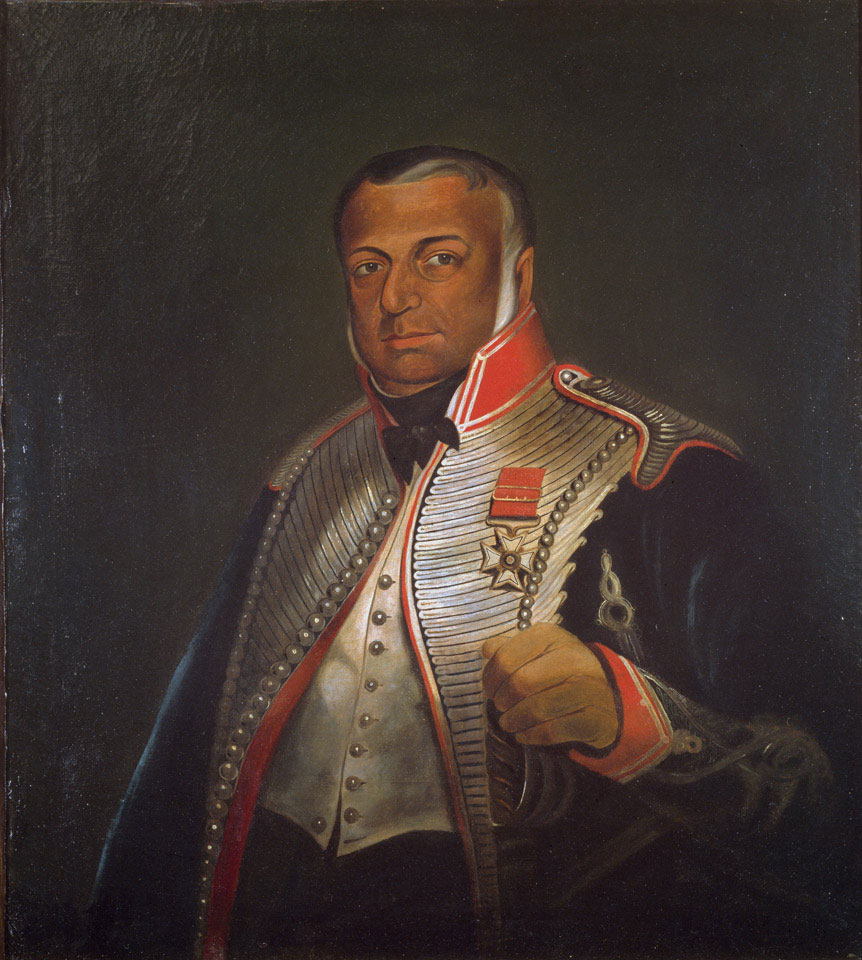
Online Collection
« Prev - 1 of 1 results - Next »
Colonel James Skinner CB, 1st Regiment of Local Horse, 1836 (c)
Oil on canvas by an unknown artist, a copy of the portrait by William Melville, 1836 (c) (in the vestry of St James's Church, Delhi).
The Anglo-Indian soldier James Skinner (1778-1841) was the son of a Scottish officer in the East India Company's service and a Rajput lady. Formerly an officer in the Maratha Army, Skinner raised two cavalry units for the British, later known as 1st and 2nd Skinner's Horse. Nicknamed 'The Yellow Boys' for their flamboyant saffron-coloured uniforms, they were famous for their horsemanship and skill at arms.
Skinner was well rewarded, enabling him to acquire a town house in Delhi and a large estate at Hansi, Haryana. He maintained a close interest in Indian culture and was an important patron of the arts, commissioning a number of paintings recording his life and exploits.
Skinner lived in princely style and liked to be addressed by his Moghul title, 'Nasir-ud-Daula, Colonel James Skinner Bahadur Ghalib Jang - Most Exalted, Victorious in War'. Although he was brought up as a Christian, his household included a number of Hindu and Muslim wives and mistresses. He built a church in Delhi, but also a mosque and a Hindu temple.
Such a cross-cultural lifestyle had few admirers among the following generations of soldiers and politicians in India. Towards the end of his life, although promoted to colonel and created a CB by the British, Skinner was conscious that his mixed race status had denied him the highest rewards for his military skills and leadership.
NAM Accession Number
NAM. 1956-02-622-1
Copyright/Ownership
National Army Museum, Out of Copyright
Location
National Army Museum, Soldier gallery
Object URL
https://collection.nam.ac.uk/detail.php?acc=1956-02-622-1

